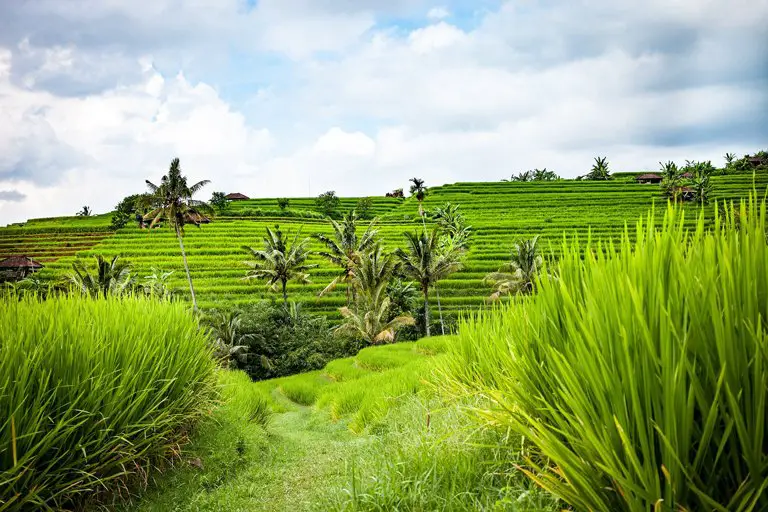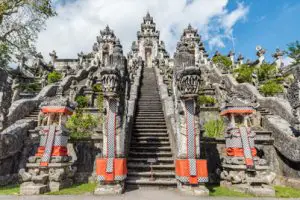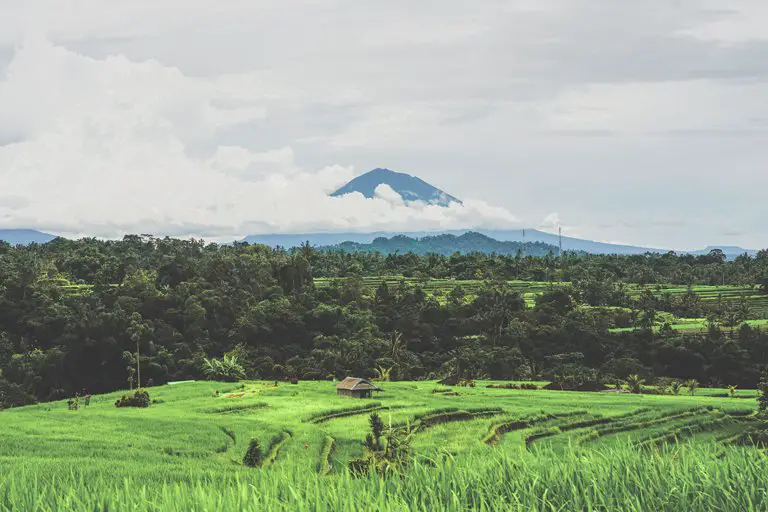UNESCO WORLD HERITAGE IN BALI
There are many places in Bali that belong to the World Heritage, but the recognition by UNESCO was not made for each of these sites individually, but it groups them all together. The denomination that UNESCO uses for the World Heritage present on the island of Bali is Cultural Landscape of Bali Province: the subak system as a manifestation of the Tri Hita Karana philosophy.
What is the subak system?
Bali’s complex irrigation system known as subak was declared a UNESCO World Heritage in 2012. This water management system came into use in the 9th century when the Balinese found a way to divert water from the mountain springs to all the communities at the base of the mountains. As a result, not only did people living near the springs benefit from the water, but it was also distributed equitably, reaching even those living further away from the spring.

We've seen what subak is, but what is the Tri Hita Karana philosophy?
Tri Hita Karana is a traditional philosophy for life in Bali and can be translated as the three causes of well-being or the three reasons for prosperity. These three causes referred to in the Tri Hita Karana are: harmony with God, harmony among people, and harmony with nature or the environment.
The principle of Tri Hita Karana is present in many aspects of Balinese life, from daily rituals to spatial organisation in Balinese architecture, but it is also reflected in the traditional irrigation system, the subak.
What does the Cultural Landscape of Bali province include?
Bali’s cultural landscape consists of five sites that exemplify the interconnected natural, religious and cultural components of the traditional subak system. This landscape includes the Supreme Water Temple of Ulun Danu Batur, the Royal Water Temple of Taman Ayun, Lake Batur, the Subak landscape of the Pakerisan valley and the Subak landscape of Catur Angga Batukaru.

UNESCO World Heritage in Bali
Ulun Danu Batur Temple
Ulun Danu Batur Temple or Pura Ulun Danu Batur dates back to the 17th century and was built to honor the god Vishnu and the goddess of the lakes, Dewi Danu. The word pura means temple, ulun means head or fountain and danu means lake. The literal translation of the temple’s name would be the temple at the spring of Lake Batur. This name illustrates the importance that this temple has for the inhabitants of Bali since the water of the lake passes through it. The Balinese pray in this temple to ask the gods for water to irrigate all the rice fields on the island, since rice is one of the main sources of income for them and also the main ingredient of the Balinese cuisine.
Taman Ayun Temple
Taman Ayun Temple is one of the best examples of classical Balinese temple architecture, but also the largest and most distinguished water temple in Badung Regency. The Balinese believe that this temple ensures the harmonious circulation of water from the mountains to the rice fields, to the sea, and then back to the mountains. This makes Taman Ayun one of the most important temples related to the subak.

The temples are a key element in the Balinese religion and society as they are sacred places where the locals go to perform their rituals. Check out the most important temples on the island of Bali.

Batur Lake
Lake Batur or Danau Batur is located in the former crater of the Batur volcano and is the largest lake in Bali. This lake is especially sacred to the Balinese as it is considered the home of Dewi Danu, the goddess of lakes. Danau Batur supplies water to most areas of Gianyar and Bangli regencies through several underground springs. This lake was included in the cultural landscape of Bali province because it’s an extremely important source of water for the island’s agricultural activities.

Discover the most important lakes in Bali. Besides from their importance in the irrigation of the rice fields, the lakes are ideal for activities such as hiking, boating or fishing.

Pakerisan Valley
The Pakerisan Valley, located in the Gianyar regency, runs alongside the river with the same name. In this area there are rice terraces like those found at Gunung Kawi where the old Subak irrigation system is still in use. This area is also known as the Valley of the Kings and is home to Gunung Kawi, some amazing carved stone shrines that honor the royalty of the 11th century. In the Pakerisan area are also located the temples Tirta Empul, Goa Gajah and some less-known temples like Pura Pengukur Ukuran, Pura Gaduh, Goa Garba or Candi Tebing Tegallingah.

The subak landscape of Catur Angga Batukaru
The subak landscape of Catur Angga Batukaru covers portions of Tabanan and Buleleng regencies and is one of the World Heritage areas. Catur Angga Batukaru is a sacred space of over 17,000 hectares, home to some of the oldest rice terraces in Bali dating back to the 10th century. This area includes the impressive Jatiluwih rice terraces, Buyan and Tamblingan Lakes with their temples and also Mount Batukaru with its forests. In the area of Catur Angga Batukaru there are more than 4,500 farmers using the subak irrigation system and therefore this is one of the areas where you can see this unique and innovative water management system which has earned the status of a World Heritage Site.

Most of the cultural landscape included in the World Heritage includes rice fields, temples and lakes that are often missed by tourists. Taking a tour through these places is a different experience where you can learn more about the Balinese culture and also about the World Heritage.


